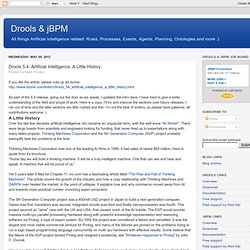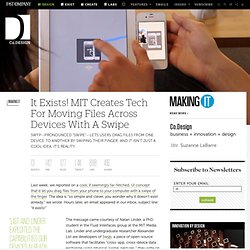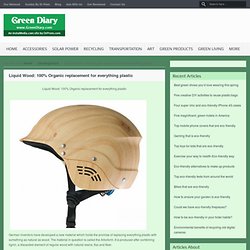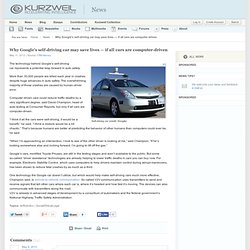

BioDigital Human. Software as a Service on Windows Azure. Bucky Balls Could Double Your Lifespan. Scientists develop “nanorobot” that can be programmed to target different diseases. University of Florida researchers have moved a step closer to treating diseases on a cellular level by creating a tiny particle that can be programmed to shut down the genetic production line that cranks out disease-related proteins.
In laboratory tests, these newly created “nanorobots” all but eradicated hepatitis C virus infection. The programmable nature of the particle makes it potentially useful against diseases such as cancer and other viral infections. The research effort, led by Y. Charles Cao, a UF associate professor of chemistry, and Dr. Chen Liu, a professor of pathology and endowed chair in gastrointestinal and liver research in the UF College of Medicine, is described online this week in the Proceedings of the National Academy of Sciences. Sings_3col.jpg (4200×3600) Jet Propulsion Laboratory - Infographics. About education news.

This Is How You Will Connect Everything in Your Home to the Internet. Teleportation record heralds secure global network - physics-math - 15 May 2012. The distance record for quantum teleportation has been smashed.

Juan Yin and colleagues at the University of Science and Technology of China in Hefei, Anhui, teleported a quantum state 97 kilometres, 81 km further than the previous record. Is this Hover Car the next people's car? Drools 5.4: Artificial Intelligence, A Little History. If you like the article, please vote up ad dzone: As part of the 5.4 release, going out the door as we speak, I updated the intro docs.

I have tried to give a wider understanding of the field and scope of work. Here is a copy. It Exists! MIT Creates Tech For Moving Files Across Devices With A Swipe. Last week, we reported on a cool, if seemingly far-fetched, UI concept that’d let you drag files from your phone to your computer with a swipe of the finger.

The idea is “so simple and clever, you wonder why it doesn’t exist already,” we wrote. Hours later, an email appeared in our inbox, subject line: “it exists!” The message came courtesy of Natan Linder, a PhD student in the Fluid Interfaces group at the MIT Media Lab. Liquid Wood: 100% Organic Replacement For Everything Plastic - Green Diary. German inventors have developed a new material which holds the promise of replacing everything plastic with something as natural as wood.

The material in question is called the Arboform. Microsoft forges ahead with new home-automation OS. More than a decade ago, Microsoft execs, led by Chairman Bill Gates, were touting a future where .Net coffee pots, bulletin boards, and refrigerator magnets would be part of homes where smart devices would communicate and interoperate.

Microsoft hasn't given up on that dream. In 2010, Microsoft researchers published a white paper about their work on a HomeOS and a HomeStore -- early concepts around a Microsoft Research-developed home-automation system. Those concepts have morphed into prototypes since then, based on a white paper, "An Operating System for the Home," published this month on the Microsoft Research site. The HomeOS is a "PC-like abstraction" for in-home devices, like lights, TVs, surveillance cameras, gaming consoles, routers, printers, PCs, mobile phones and more.
These devices appear to the HomeOS user as peripherals connected to a single PC. Massive Milestones in Mobile - Will These Numbers Change Your Mobile Strategy? In less than 12 months from now, the world will have more mobile subscriptions in use, than humans alive.

That is an unprecedented milestone for any technology but it is also widely expected and is not news to the readers of this blog. (The world had 7 Billion people and 5.9 Billion mobile phone subscriptions in use by the end of 2011, today we are past 6.2 Billion mobile subscriptions already). Yes, on this blog and in my books I have chronicled the rapid rise of mobile. But what else can we expect in mobile milestones over the next few years? As I have just released my Mobile Forecast 2012-2015, there are several interesting items in it that may be useful for our readers. Last year 2011 was the first year ever, that voice calls were no longer the primary use of our mobile 'phones'.
Embedded chips, GPS pacemakers, AI, Oh my — what’s in your health future? Ten years ago, if anyone said that a multifunctional device would one day allow people to play a word game with anyone in the world as well as enable a doctor to get ECG data — many would simply say baloney.

Of course, the iPhone and iPad are no longer a figment of anyone’s imagination. With the same idea in mind, MedCity News asked doctors, digital health experts and healthcare futurists, what is in our collective health future? Google’s Project Glass – Welcome to the Future. By Julie Imagine this if you will, you’re walking down the street engaged in a video chat with your friend, who is 6000 miles away, taking pictures and planning your day when you realize you don’t know where you are, as you look up and to the right a computer screen appears in your line of vision, and you ask it to find the nearest subway station, and it does.

Why Google’s self-driving car may save lives — if all cars are computer-driven. Self-driving car (credit: Google) The technology behind Google’s self-driving car represents a potential leap forward in auto safety.

More than 30,000 people are killed each year in crashes despite huge advances in auto safety. The overwhelming majority of those crashes are caused by human-driver error. Computer driven cars could reduce traffic deaths by a very significant degree, said David Champion, head of auto testing at Consumer Reports, but only if all cars are computer-driven. Google's Self-Driving Car Gets a License in Nevada. The state of Nevada has issued a first license for one of Google's self-driving cars — provided there are two people inside the car at all times, the Associated Press reports. Nevada's DMV has issued the license after conducting demonstrations that the car is safe for testing on public streets. Google's self-driving cars use a laser radar on the roof of the vehicle to detect obstacles, pedestrians and other cars.
With the help of GPS and a bit of artificial intelligence, the car can drive itself with very little or no intervention from the human sitting inside. That said, Nevada's regulations require two people in the test cars: one in the driver's seat, and other monitoring a computer screen that shows the car's planned route as well as traffic lights and other potential hazards on the road. As soon as the "driver" touches the brake or the wheel, he takes control of the vehicle.
Google Glasses (Project Glass) : The Future of Human Computer Interaction? Google made waves on the Internet last month when it unveiled what it is calling Project Glass. The company released some press shots of what the product, Google Glasses, might eventually look like. Back to Basics: How Google’s driverless car stays on the road. Google's self-driving cars are making headlines again, now that they've expanded testing from California into Nevada.
Competitors are hot on their tail, but currently Google seems to have an undisputed spot on top of autonomous vehicular design. So how do they do it? With a combination of some incredible software and hardware engineering, using processes developed by both Google and the best and brightest of DARPA's robotic race challenges. The first step in the process is navigation, something that requires a little more than the Google Maps Navigation functionality on display in Android. The Potential of Photosynthetic Microbes as a Source of Energy in the UK Water Industry. Laser 'unprinter' wipes photocopied ink from paper. 15 March 2012Last updated at 11:46 ET A close-up image of a sheet of "unphotocopied" paper reveals most of the toner has been removed A process to "unphotocopy" toner ink from paper has been developed by engineers at the University of Cambridge. The process involves using short laser pulses to erase words and images by heating the printed material to the point that they vaporise.
New holey material soaks up CO2. 12 June 2012Last updated at 06:42 ET. Synthetic biology - no worries? (item 5) News Alert Issue 288, 15 June 2012 Science for Environment Policy. Laser 'unprinter' wipes photocopied ink from paper. Outdoor - New Agriculture Methods Could Halve Food Price Inflation. Volkswagen crowdsources its way to a Hover Car. Granny army helps India's school children via the cloud. The Sonic Interface Trend [Need To Know: SXSWi] How to survive the next 100,000 years. MacGregor Campbell, contributor Will humans be around in the deep future?
A Manhattan Project for green innovation? Try open innovation instead! Read this post in Bahasa. Last week the World Bank launched a new approach to fostering green innovation called the Indonesia Green Innovation Pilot Program. Its aim is to learn how open innovation principles can foster the generation of market-based solutions to clean energy. World Economic Forum lists top 10 emerging technologies for 2012. The World Economic Forum's Global Agenda Council on Emerging Technologies has drawn up a list of the top 10 emerging technologies for 2012 (Image: Shutterstock)
Boffins boost fuel-cell future with 'nanowire forest' High performance access to file storage Researchers at a California university have developed a nanowire-based method to efficiently harvest hydrogen for fuel cells without the need for electricity, which is commonly generated by greenhouse-gas producing fossil fuels or nuclear reactors with their problematic waste.
Rapidly Increased Wireless Capacity from Light Radio Cubes. Envisioning the future of technology — by Michell Zappa. Sea urchin spine structure inspires idea for concrete. 15 February 2012Last updated at 01:57 By Jason Palmer Science and technology reporter, BBC News The spines do not break cleanly, suggesting they are not made solely of single crystals. As strong as an insect’s shell. Harvard researchers at the Wyss Institute for Biologically Inspired Engineering have come up with a tough, low-cost, biodegradable material inspired by insects’ hard outer shells. Nanomaterial dust is more explosion-prone that normal dust. Gecko-inspired adhesive can hold 300kg. Solve for X. Cost of gene sequencing falls, raising hopes for medical advances. The magnetic soap that could clean up oil spills. Let the Robot Drive: The Autonomous Car of the Future Is Here. Five reasons the robo-car haters are wrong. BYOD: Bring your own device could spell end for work PC.
Nanofactories – a future vision. The top 10 emerging technologies for 2012. Unexpected Strength and Toughness in Chitosan-Fibroin Laminates Inspired by Insect Cuticle - Fernandez - 2011 - Advanced Materials. Apple, Amazon, Microsoft choose dirty energy to power growing cloud computing Greenpeace report evaluates 14 global IT companies’ energy choices. UK's first wind-powered electric van. The Holonic Streetlamp is an Off-Grid Streetlight that's Powered by Wind and Solar.
US researchers build 'waste water generator' Pond skaters' feet inspire buoyant new material. Spinoff Homepage. Tata Motors enters second phase of air-car development. UK and Denmark to explore wind power interconnector - 30 Apr 2012. Chart Focus: How business uses social technologies. Cognitive software captures experts’ performance on flight simulators.
Are Smart Phones Spreading Faster than Any Technology in Human History? Wind turbine creates water from thin air. Cyborg snail gets biofuel cell implant. At Long Last, Physicists Discover Famed Higgs Boson. Super-polluted city tries to clean itself with smog-eating paint. A State-by-State Roadmap To Climate-Friendly Automobiles. Harder than diamond, stronger than steel. Scientists create artificial jellyfish from rat's heart. 'Disruptive Technologies'.